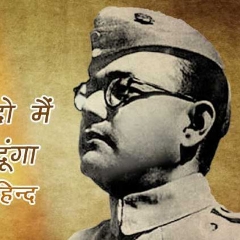Question 1 :
The average kinetic energy of a molecule of a perfect gas is :
Question 2 :
The number of degrees of freedom for each atom of a monoatomic gas is :
Question 4 :
A bullet travelling at 100 $ms^{-1}$ suddenly hits a concrete wall. If its K.E. is converted completely into heat, the raise in temperature is $\left ( s=100Jkg^{-1}K^{-1} \right )$ :<br/>
Question 6 :
A heating coil is dipped in a bucket filled with water. Explain the significant mechanisms in heat flow.
Question 8 :
<p class="wysiwyg-text-align-left">If the temperature of a gas is increased by 1 K at constant pressure, its volume increases by 0.0035 of the initial volume. The temperature of the gas is :</p>
Question 11 :
<p class="wysiwyg-text-align-left">1 mole of $SO_2$ occupies a volume of $350 ml$ at $300K$ and $50 atm $ pressure. Calculate the compressibility factor of the gas.<br/></p>
Question 12 :
The mean free path of a gas varies with absolute temperature as :
Question 13 :
If the pressure of a gas is increased then its mean free path becomes :
Question 15 :
The relation PV=RT can describe the behavior of a real gas at :
Question 17 :
<p class="wysiwyg-text-align-left">For perfect gas, the ratio of volume coefficient of expansion to pressure coefficient is :<br/></p>
Question 18 :
The internal energy of one gram of helium at $100$K and one atmospheric pressure is?
Question 19 :
If the pressure in a closed vessel is reduced by drawing out some gas, the mean-free path of molecules :
Question 20 :
A cylinder contains helium at 2.5 atmosphere pressure. Another identical cylinder contains argon at 1.5 atmosphere pressure at the same temperature. If both the gases are filled in any one of the cylinders, the pressure of the mixture will be :
Question 21 :
The total kinetic energy of translatory motion of all molecules of 5 litres of nitrogen exerting a pressure is 3000J
Question 22 :
The relation between the internal energy $U$ and adiabatic constant $\gamma$ is
Question 23 :
Modern vacuum pumps can evacuate a vessel down to a pressure of $4.0\times 10^{-15}atm.$ at room temperature (300 K). Taking $R=8.3 KJ^{-1} mole^{-1}, 1 atm =10^5$ Pa and $N_{Avogradro}=6\times 10^{23} mole^{-1}$, the mean distance between molecules of gas in an evacuated vessel will be of the order of
Question 24 :
<p class="wysiwyg-text-align-left">The density of an air bubble decreases by x% as it rises from the bottom of a lake to its surface. If the height of the water barometer is H, the depth of the lake is</p>
Question 25 :
<p class="wysiwyg-text-align-left">The total kinetic energy of $8$ litres of helium molecules at $5 $ atmosphere pressure will be</p>
Question 26 :
A gas mixture consists of 2moles of oxygen and 4moles of Ar at temperature T. Neglecting all vibrational modes, the total internal energy of the system is
Question 27 :
When 2 gms of a gas are introduced into an evacuated flask kept at $25^0$C the pressure is found to be one atmosphere. If 3 gms of another gas added to the same flask the pressure becomes 1.5 atmospheres. The ratio of the molecular weights of these gases will be
Question 28 :
Ten small planes are flying at a speed of $150$km $h^{-1}$ in total darkness in an air space that is $20\times 20\times 1.5km^3$ in volume. You are in one of the planes, flying at random within this space with no way of knowing where the other planes are. On the average about how long a time will elapse between near collision with your plane. Assume for this rough computation that a safety region around the plane can be approximated by a sphere of radius $10$m.
Question 30 :
A monoatomic ideal gas undergoes a process in which the ratio of $P$ to $V$ at any instant is constant and equal to unity. The molar heat capacity of gas is:
Question 31 :
Two rigid boxes containing different ideal gases are placed on a table. Box A contains one mole of $N_{2}$ at temperature $T_{0}$, while box B contains one mole of $H_{2}$ at temperature 7/3 $T_{0}$. The boxes are then put into thermal contact with each other and heat flows between them until the gases reach a common final temperature [Ignore the heat capacity of boxes]. Then the final temperature of the gases $T_{f}$ in terms of $T_{0}$ is<br/>
Question 32 :
In a certain gas $\displaystyle \frac{2}{5}$th of the energy of molecules is associated with the rotation of molecules and the rest of it is associated with the motion of the centre of mass. The average translation energy of one such molecule, when the temperature is $27^{\circ}C$ is given by $x\times 10^{-23}\ J$,then find $x$?<br/>
Question 33 :
One mole of an ideal gas $ [{C}_{v,m} = \frac {5}{2}R ] $ at $300$ K and $5$ atm is expanded adiabatically to a final pressure of $2$ atm against a constant pressure of $2$ atm. The final temperature (in Kelvin) of the gas is:
Question 34 :
Let $\overline {v}, v_{rms}$ and $v_{p}$, respectively, denote the mean speed, root mean square speed and most probable speed of the molecules in an ideal monatiomc gas at absolute temperature $T$. The mass of a molecules is $m$. Then
Question 35 :
One box containing $1$ mole of $He$ at $7/3 T_0$ and other box containing $1$ mole of a polyatomic gas $(\gamma=1.33)$ at $T_0$ are placed together to attain thermal equilibrium. The final temperature becomes $T_f$. Then :<br/>
Question 36 :
A monoatomic ideal gas ($ {C}_{V} = \dfrac {3}{2} R$) is allowed to expand adiabatically and reversibly from initial volume of 8L at 300 K to a volume of $ {V}_{2} $ at 250 K. $ {V}_{2} $ is: (Given ${(4.8)}^{1/2}$ = 2.2)
Question 37 :
The equation of state for 5 g of oxygen at a pressure P and temperature T, when occupying a volume V, will be
Question 38 :
For silver , $C_p(JK^{-1}mol^{-1})=23+0.01T$. If the temperature (T) of 3 moles of silver is raised from $300K$ to $1000K$ at $1\ atm$ pressure, the value of $\Delta H$ will be close to: 
Question 39 :
The ratio of translational and rotational kinetic energies at 100 K temperature is 3 : 2. Then the internal energy of one mole gas at that temperature is $[R = 8.3 J/mol-K]$<br/>
Question 40 :
A certain mass of an ideal gas undergoes a reversible isothermal compression. Its molecules, compared with the initial state, will then have the same<br/>(i) root mean square velocity<br/>(ii) mean momentum<br/>(iii) mean kinetic energy<br/>



















































